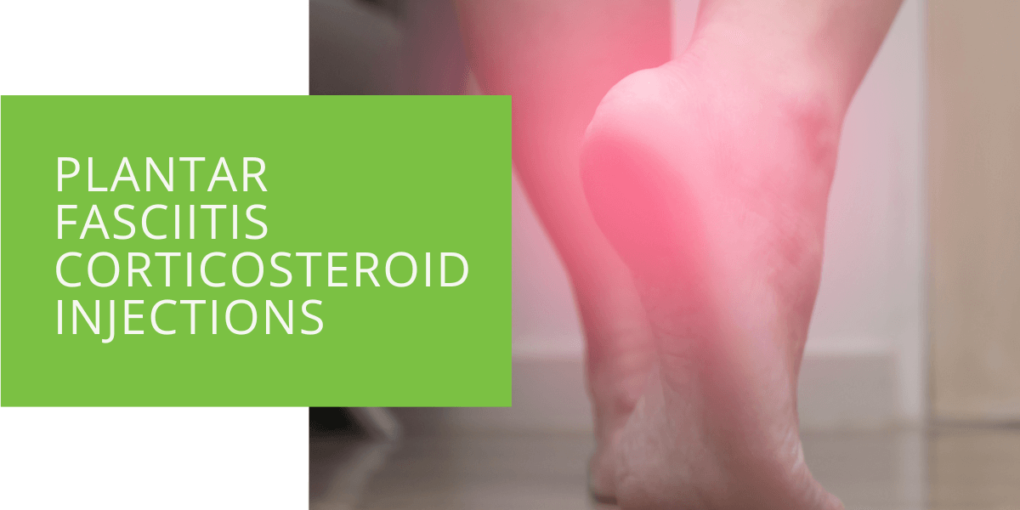Plantar Fasciitis Corticosteroid Injections: What You Need to Know
Plantar fasciitis is a common condition that causes pain and inflammation in the plantar fascia, the band of tissue that runs along the bottom of the foot. This condition is often marked by heel pain, especially when first getting out of bed in the morning or after long periods of standing or walking.
Podiatrists, medical professionals who specialize in the diagnosis and treatment of foot and ankle conditions, are often the first point of contact for individuals experiencing plantar fasciitis. These specialists can provide a variety of treatments to help manage the pain and inflammation associated with this condition, including corticosteroid injections.
What Are Corticosteroid Injections?
Corticosteroid injections, also known as cortisone injections, are medications that are used to reduce inflammation in the body. These injections contain a synthetic form of the hormone cortisol, which is naturally produced by the adrenal gland. Cortisol helps regulate the body's immune system and metabolism, and can also help reduce inflammation.
Corticosteroid injections are commonly used to treat a range of conditions, including inflammatory joint disorders, allergies, and certain skin conditions. In the case of plantar fasciitis, corticosteroid injections may be recommended to help reduce inflammation and pain in the plantar fascia.
How Are Corticosteroid Injections Used to Treat Plantar Fasciitis?
Podiatrists may recommend corticosteroid injections as a treatment option for individuals experiencing plantar fasciitis if other non-invasive treatments, such as stretching and physical therapy, have not provided sufficient relief. Corticosteroid injections can be an effective way to reduce inflammation and pain in the plantar fascia, allowing individuals to resume their normal activities with less discomfort.
Typically, one corticosteroid injection is given directly into the area of the plantar fascia that is experiencing pain and inflammation. In some cases, a series of injections may be necessary to achieve the desired level of pain relief. However, it is important to note that corticosteroid injections are not a permanent solution for plantar fasciitis and should be used in conjunction with other treatments, such as stretching and physical therapy, to help manage the condition long-term.

What Can I Expect During the Injection Process?
Before receiving a corticosteroid injection for plantar fasciitis, your podiatrist will perform a thorough evaluation of your foot and ankle to determine the cause of your pain and confirm that corticosteroid injections are an appropriate treatment option. They may also ask about your medical history and any allergies you may have.
To prepare for the injection, you may be asked to remove any jewelry or other items that could interfere with the injection process. You may also be asked to wear a hospital gown or remove certain articles of clothing to allow easy access to the injection site.
During the injection process, your podiatrist will clean the area with an antiseptic solution and numb it with a local anesthetic to minimize discomfort. They will then use a small needle to inject the corticosteroid medication directly into the plantar fascia. The injection process typically takes only a few minutes and is generally well-tolerated by most individuals.
After the injection, your podiatrist will provide you with care instructions and may recommend that you avoid strenuous activities for a few days to allow the medication to take effect. It is also important to keep the injection site clean and dry and to contact your podiatrist if you experience any unusual symptoms or side effects.
While corticosteroid injections can be an effective treatment for plantar fasciitis, it is important to note that they are not a permanent solution and may not work for everyone. In some cases, multiple injections may be needed to achieve the desired level of pain relief. Additionally, corticosteroid injections may cause side effects, such as skin thinning, lightening, or scarring at the injection site, and may also weaken the plantar fascia if used excessively.
It is important to discuss the potential risks and benefits of corticosteroid injections with your podiatrist before undergoing treatment. They will be able to help you make an informed decision about whether this treatment is right for you.
It is also important to remember that corticosteroid injections should be used in conjunction with other treatments, such as stretching and physical therapy, to help manage plantar fasciitis long-term. Maintaining good foot and ankle health, including wearing supportive shoes and practicing good foot care habits, can also help prevent the recurrence of plantar fasciitis.

Are Corticosteroid Injections the Only Treatment Option for Plantar Fasciitis?
Corticosteroid injections can be a helpful treatment option for individuals experiencing plantar fasciitis, but they are not the only option available. Other treatments that may be recommended by podiatrists for plantar fasciitis include:
- Stretching and physical therapy: Stretching exercises and physical therapy can help strengthen the muscles in the foot and ankle, improve flexibility, and reduce inflammation. These treatments may be recommended in conjunction with corticosteroid injections or as an alternative for individuals who cannot or do not want to receive injections.
- Orthotic inserts: Orthotic inserts, which are special inserts that are placed inside the shoe, can help support the arch of the foot and reduce strain on the plantar fascia. These inserts can be custom-made by a podiatrist or purchased over-the-counter.
- Ice and rest: Applying ice to the affected area and resting the foot can help reduce inflammation and pain. It is important to avoid activities that may exacerbate plantar fasciitis, such as prolonged standing or walking on hard surfaces.
- Nonsteroidal anti-inflammatory drugs (NSAIDs): NSAIDs, such as ibuprofen and naproxen, can help reduce inflammation and pain. These medications can be taken orally or applied topically.
It is important to work with a healthcare provider, such as a podiatrist, to determine the best treatment plan for your specific needs. Your provider will consider a variety of factors, including the severity of your plantar fasciitis, your age, and any underlying medical conditions you may have, to determine the most appropriate treatment approach.

Conclusion
Plantar fasciitis is a common condition that causes pain and inflammation in the plantar fascia, the band of tissue that runs along the bottom of the foot. Podiatrists, medical professionals who specialize in the diagnosis and treatment of foot and ankle conditions, can provide a variety of treatments to help manage this condition, including corticosteroid injections. Corticosteroid injections can be an effective way to reduce inflammation and pain in the plantar fascia, allowing individuals to resume their normal activities with less discomfort.
However, it is important to note that corticosteroid injections are not a permanent solution for plantar fasciitis and should be used in conjunction with other treatments, such as stretching and physical therapy, to help manage the condition long-term. If you are experiencing plantar fasciitis, it is important to work with a healthcare provider to determine the best treatment plan for your specific needs.
FAQ
What is a steroid injection?
A steroid injection, also known as a corticosteroid shot, is a medication that is used to reduce inflammation in the body. These injections contain a synthetic form of the hormone cortisol, which is naturally produced by the adrenal gland. Cortisol helps regulate the body's immune system and metabolism, and can also help reduce inflammation. In the case of plantar fasciitis, corticosteroid injections may be recommended to help reduce inflammation and pain in the plantar fascia, a band of tissue that runs along the bottom of the foot.
How does a podiatrist administer a corticosteroid injection for plantar fasciitis?
Before administering a corticosteroid injection for plantar fasciitis, a podiatrist will perform a thorough evaluation of the foot and ankle to determine the cause of the pain and confirm that corticosteroid injections are an appropriate treatment option. They may also ask about the patient's medical history and any allergies they may have. During the injection process, the podiatrist will clean the area with an antiseptic solution and numb it with a local anesthetic to minimize discomfort. They will then use a small needle to inject the corticosteroid medication directly into the plantar fascia. The injection process typically takes only a few minutes and is generally well-tolerated by most patients.
Can ultrasound be used in conjunction with a corticosteroid injection for plantar fasciitis?
Yes, ultrasound may be used in conjunction with a corticosteroid injection to help treat plantar fasciitis. Ultrasound uses high-frequency sound waves to produce images of the inside of the body, including the muscles, tendons, and other soft tissues. These images can help a podiatrist accurately locate the source of the pain and inflammation in the plantar fascia and guide the injection needle to the appropriate area. Ultrasound may also be used to help monitor the progress of the treatment and ensure that the corticosteroid injection is being delivered to the right location.
Who is a good candidate for a corticosteroid injection for plantar fasciitis?
Corticosteroid injections may be an appropriate treatment option for patients with plantar fasciitis who have not found relief through other non-invasive treatments, such as stretching and physical therapy. However, it is important to discuss the potential risks and benefits of corticosteroid injections with a podiatrist before undergoing treatment. They will be able to determine if this treatment is right for you based on a variety of factors, including the severity of your plantar fasciitis, your age, and any underlying medical conditions you may have.
Can a corticosteroid injection be used to treat a fracture or tendon injury?
While corticosteroid injections are primarily used to reduce inflammation, they may also be used to treat certain types of fractures and tendon injuries. However, it is important to note that corticosteroid injections should not be used to treat all types of fractures and tendon injuries. In some cases, other treatments, such as surgery or immobilization with a cast, may be necessary. It is important to work with a healthcare provider to determine the best treatment approach for your specific injury.
Is podiatry covered by insurance?
Coverage for podiatry services may vary depending on your specific insurance plan. It is important to check with your insurance provider to determine what is covered under your plan. In some cases, a referral from a primary care physician may be required to see a podiatrist.

